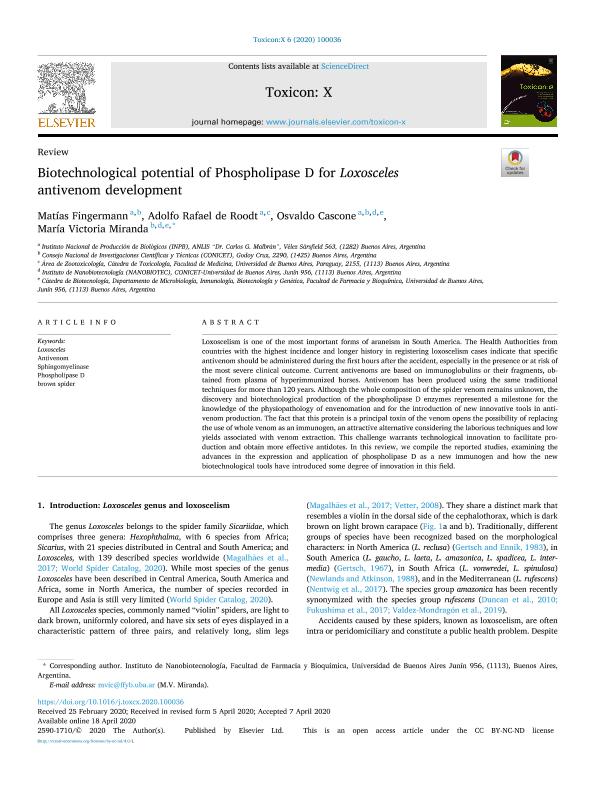Artículo
Biotechnological potential of Phospholipase D for Loxosceles antivenom development
Fecha de publicación:
06/2020
Editorial:
Elsevier
Revista:
Toxicon: X
ISSN:
2590-1710
Idioma:
Inglés
Tipo de recurso:
Artículo publicado
Clasificación temática:
Resumen
Loxoscelism is one of the most important forms of araneism in South America. The Health Authorities from countries with the highest incidence and longer history in registering loxoscelism cases indicate that specific antivenom should be administered during the first hours after the accident, especially in the presence or at risk of the most severe clinical outcome. Current antivenoms are based on immunoglobulins or their fragments, obtained from plasma of hyperimmunized horses. Antivenom has been produced using the same traditional techniques for more than 120 years. Although the whole composition of the spider venom remains unknown, the discovery and biotechnological production of the phospholipase D enzymes represented a milestone for the knowledge of the physiopathology of envenomation and for the introduction of new innovative tools in antivenom production. The fact that this protein is a principal toxin of the venom opens the possibility of replacing the use of whole venom as an immunogen, an attractive alternative considering the laborious techniques and low yields associated with venom extraction. This challenge warrants technological innovation to facilitate production and obtain more effective antidotes. In this review, we compile the reported studies, examining the advances in the expression and application of phospholipase D as a new immunogen and how the new biotechnological tools have introduced some degree of innovation in this field.
Palabras clave:
ANTIVENOM
,
BROWN SPIDER
,
LOXOSCELES
,
PHOSPHOLIPASE D
,
SPHINGOMYELINASE
Archivos asociados
Licencia
Identificadores
Colecciones
Articulos(NANOBIOTEC)
Articulos de INSTITUTO DE NANOBIOTECNOLOGIA
Articulos de INSTITUTO DE NANOBIOTECNOLOGIA
Articulos(SEDE CENTRAL)
Articulos de SEDE CENTRAL
Articulos de SEDE CENTRAL
Citación
Fingermann, Matias; de Roodt, Adolfo Rafael; Cascone, Osvaldo; Miranda, Maria Victoria; Biotechnological potential of Phospholipase D for Loxosceles antivenom development; Elsevier; Toxicon: X; 6; 6-2020; 1-9
Compartir
Altmétricas




